Superior National Forest
- January 30, 2024
- 0 comment
Discover Superior National Forest’s wilderness, home to the Boundary Waters, diverse wildlife, and endless outdoor adventures. Located in the heart of the Midwest, Minnesota National Forest stands as a testament to nature’s serene beauty and diversity. This forest, sprawling across thousands of acres, offers a haven for wildlife and a natural playground for outdoor enthusiasts.

From the lush, verdant landscapes that change with the seasons to the tranquil lakes dotting the region, it’s a perfect destination for those seeking a blend of adventure and tranquility. The forest caters to a variety of activities including hiking, camping, and wildlife observation, making it an ideal choice for nature lovers and adventure seekers alike.
Characterizing Features of Superior National Forest
- Boreal Forest Ecosystem The Superior National Forest is predominantly a boreal forest, characterized by a mix of coniferous and deciduous trees. This ecosystem is vital for maintaining biodiversity, providing habitat for a variety of wildlife species, including lynx, moose, and wolves. The forest’s dense spruce and fir trees interspersed with birch and aspen create a unique and rich environment that supports a complex food web. This ecosystem is also significant for its role in carbon sequestration, helping to mitigate the effects of climate change.
- Boundary Waters Canoe Area Wilderness (BWCAW) Encompassing over one million acres, the BWCAW within Superior National Forest is a popular destination for canoeing, kayaking, and fishing. This area is famous for its interconnected waterways, pristine lakes, and scenic beauty. It’s a critical habitat for aquatic species and offers a serene, motor-free environment, making it a prime location for experiencing wilderness and solitude. The BWCAW is a testament to successful conservation efforts and symbolizes the balance between recreation and preservation.
- Geological Formations The forest is home to fascinating geological formations, including ancient rock formations that date back billions of years. These formations tell a story of the Earth’s history, including volcanic activity and glacial movements. The presence of unique geological features, such as the Sawtooth Mountains and the Ely Greenstone, adds to the forest’s allure for geologists and nature enthusiasts alike. These formations not only contribute to the scenic beauty but also provide important insights into past climatic and environmental conditions.
- Rich Indigenous History Superior National Forest is deeply rooted in indigenous history, with the land holding significant cultural and spiritual value for several Native American tribes. The forest area has been home to the Ojibwe people for centuries, and their influence is evident in the landscape, place names, and cultural practices observed in the region. This rich heritage adds an important historical and cultural dimension to the forest, making it a place of learning and respect for indigenous traditions and knowledge.
- Diverse Wildlife and Flora The forest boasts a rich array of wildlife and plant species, making it a hotspot for biodiversity. From large mammals like bears and wolves to an array of bird species, including the iconic bald eagle, the forest serves as a critical habitat for many creatures. The flora is equally diverse, with a range of tree species, wildflowers, and unique fungi, reflecting the forest’s varied microclimates and soil types. This biodiversity is crucial for ecological balance and offers ample opportunities for wildlife observation and botanical study.
- Recreational Opportunities Superior National Forest offers a plethora of recreational activities, catering to a wide range of interests. From hiking and mountain biking on its extensive trail system to camping and fishing in its remote backcountry, the forest is a haven for outdoor enthusiasts. Winter sports like cross-country skiing and snowmobiling are also popular, making the forest a year-round destination. These recreational activities not only support local economies but also foster a connection between visitors and the natural world.
- Conservation and Management Efforts The forest is a model of progressive conservation and resource management practices. Efforts to preserve the natural habitat, protect endangered species, and manage resources sustainably are evident throughout the forest. These practices ensure that the forest’s ecological integrity is maintained while accommodating recreational and economic uses. This balance is key to the forest’s continued health and accessibility for future generations.
History of Superior National Forest
Superior National Forest, a majestic wilderness in northeastern Minnesota, has a rich history shaped by both natural forces and human influence. The story of this forest begins over 10,000 years ago with the retreat of glaciers from the last Ice Age. This dramatic event carved out the region’s distinctive landscape of rugged terrain and numerous lakes. For centuries, this land was inhabited by the Ojibwe people, who lived in harmony with the natural world, utilizing the forest’s resources for fishing, hunting, and gathering.
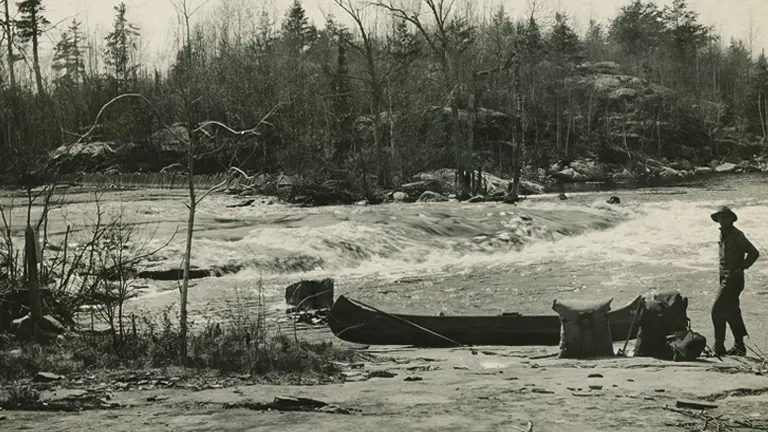
The arrival of European settlers in the 1800s marked a turning point in the forest’s history. The area became a hub for the fur trade, and later, the logging industry boomed, leading to extensive deforestation. Concerns over these practices led to the establishment of Superior National Forest in 1909 by President Theodore Roosevelt, aiming to protect the remaining old-growth trees and rehabilitate areas damaged by logging. The early 20th century saw significant conservation efforts, including the formation of the Boundary Waters Canoe Area Wilderness (BWCAW) within the forest, a recognition of its unique wilderness value. Since then, the forest has been a focal point for conservation, balancing recreational use with sustainable forest management.
Unique Ecosystem of Superior National Forest
Superior National Forest, a remarkable ecological treasure in northeastern Minnesota, is distinguished by its unique boreal forest ecosystem. Characterized by a rich tapestry of coniferous and deciduous trees, including spruce, fir, birch, and aspen, the forest provides a critical habitat for a diverse array of wildlife. Species such as the gray wolf, moose, and the elusive Canada lynx thrive here, supported by the forest’s complex web of life.
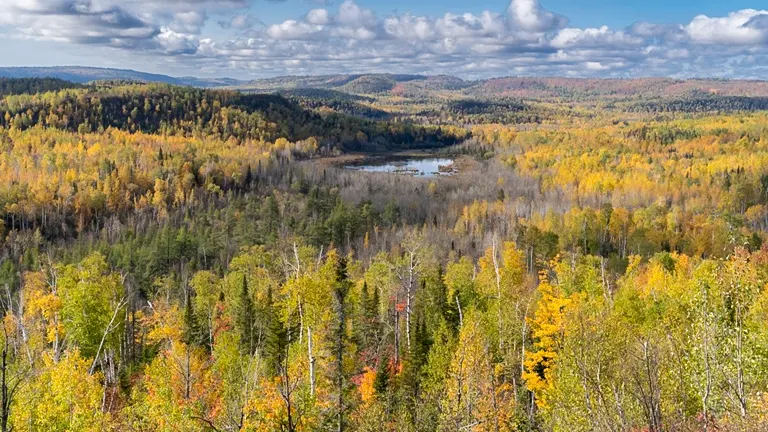
Additionally, the forest encompasses the Boundary Waters Canoe Area Wilderness, a vast network of interconnected waterways that forms one of the most extensive freshwater systems in the United States. This intricate mosaic of lakes, rivers, and wetlands is not only a haven for aquatic species but also plays a vital role in water purification and climate regulation. The unique interplay between land and water, combined with the forest’s northern latitude, results in a distinct ecosystem that supports a rich biodiversity and offers invaluable insights into ecological resilience and environmental change.
Location of Superior National Forest
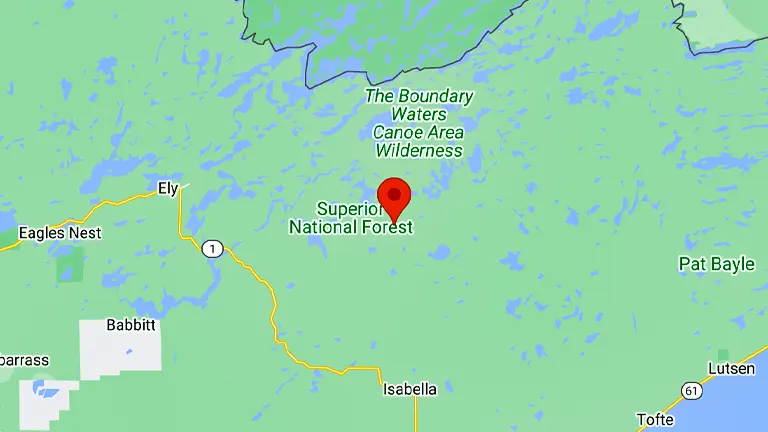
Superior National Forest is strategically situated in the northeastern region of Minnesota, United States, encompassing a vast area of approximately 3.9 million acres. It stretches from the shores of Lake Superior, the largest of the Great Lakes, to the Canadian border, forming a significant part of the United States-Canada boundary. The forest’s geographic coordinates center around approximately 47.7°N latitude and 91.0°W longitude, positioning it within the North American boreal zone. This location contributes to its unique ecological characteristics, including its diverse boreal forest ecosystem. The forest is also notable for housing the Boundary Waters Canoe Area Wilderness (BWCAW), a renowned wilderness area known for its extensive network of lakes and rivers. Superior National Forest’s location, bordered by the rugged beauty of the Sawtooth Mountains and dotted with thousands of lakes and streams, makes it not only a crucial ecological asset but also a popular destination for outdoor recreation and wilderness exploration.
Here are specific steps and tips to help you plan your trip:
1. By Air:
- The nearest major airports are Duluth International Airport (DLH) in Duluth, Minnesota, and Minneapolis-Saint Paul International Airport (MSP) in Minneapolis.
- From Duluth, it’s approximately a two-hour drive to the forest. Rent a car at the airport and take State Highway 61 north along the scenic shores of Lake Superior.
- From Minneapolis, the drive is about four to five hours. Take Interstate 35 North to Duluth, then follow the aforementioned route on State Highway 61.
2. By Car:
- For those driving from within the United States or Canada, use major interstates leading to Duluth (such as I-35) and then proceed on State Highway 61.
- Ensure your vehicle is well-prepared for rural travel, especially if visiting in winter, as conditions can be challenging.
3. Public Transportation:
- While direct public transportation to the forest is limited, there are bus services available to nearby towns like Duluth. From there, renting a car would be necessary to reach the forest.
4. Accommodations and Entry Points:
- The forest has multiple entry points. Popular ones include Ely, Grand Marais, and Cook. Choose your entry point based on your itinerary and accommodations.
- Book your accommodation in advance, especially during peak seasons. Options range from campgrounds within the forest to hotels in nearby towns.
5. Seasonal Considerations:
- The forest offers different experiences throughout the year. Summer and fall are ideal for hiking and canoeing, while winter offers snow sports. Check weather forecasts and prepare accordingly.
6. Local Regulations and Permits:
- If planning to visit the BWCAW, a permit is required. These can be obtained online or at ranger stations. Adhere to all forest regulations to preserve its natural beauty.
7. Safety and Preparedness:
- Ensure you have maps, a compass or GPS, and basic survival gear. Cell service can be limited, so inform someone about your travel plans.
8. Enjoying the Journey:
- While traveling, take time to enjoy the scenic routes, particularly along Lake Superior, and consider stopping at local attractions and visitor centers.
The Importance of Conservation and Recreation in Superior National Forest
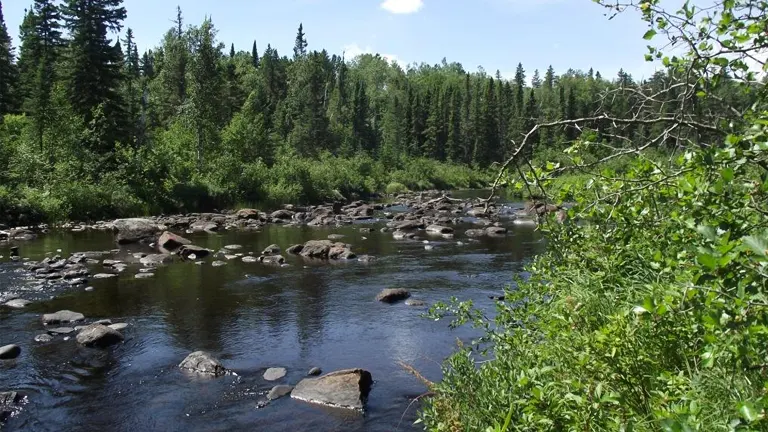
Superior National Forest, a crucial natural reserve in northeastern Minnesota, epitomizes the delicate balance between conservation and recreation, serving as a model for sustainable natural resource management. The forest’s vast boreal ecosystem, home to a myriad of species and ancient geological formations, is under constant threat from environmental changes and human activities, making conservation efforts imperative. These efforts include habitat preservation, wildlife management, and combating invasive species, ensuring the forest’s ecological integrity for future generations. Simultaneously, the forest offers extensive recreational opportunities, from canoeing in the Boundary Waters Canoe Area Wilderness to hiking and camping amidst its diverse landscapes. This recreational use not only fosters a deeper public appreciation for the natural world but also drives economic benefits to surrounding communities. The forest’s management strategies thus strive to harmonize human enjoyment with the preservation of its unique environment, showcasing the symbiotic relationship between nature conservation and responsible recreation.
Diverse Vegetation and Plant Species in Superior National Forest
- Balsam Fir (Abies balsamea): A staple of the boreal forest, Balsam Fir is easily recognizable by its dark green, needle-like leaves and conical shape. It provides crucial habitat and food for wildlife, including birds and small mammals.
- Paper Birch (Betula papyrifera): Known for its distinctive white bark, the Paper Birch is a symbol of northern forests. It thrives in well-drained soils and is important for erosion control. The tree’s bark has historical uses in indigenous cultures for crafting canoes and other tools.
- Quaking Aspen (Populus tremuloides): The Quaking Aspen, with its fluttering leaves, is a fast-growing species that quickly repopulates areas disturbed by fire or logging. It supports a range of wildlife, from moose, which feed on the bark, to birds that nest in its branches.
- Jack Pine (Pinus banksiana): This hardy species is adapted to survive in poor, sandy soils and is crucial for fire-dependent ecosystems. Its cones often require the heat of a fire to open, making it a key species in post-fire regeneration.
- Red Pine (Pinus resinosa): Also known as the Norway Pine, this species is notable for its tall, straight trunk and red-barked branches. Red Pines are often used in reforestation efforts and provide habitats for various bird species.
- Sugar Maple (Acer saccharum): Famous for its vibrant fall foliage and sap, which is used to make maple syrup, the Sugar Maple is a vital component of the forest’s hardwood areas. It supports a diverse ecosystem, from the fungi in its soil to the squirrels that feed on its seeds.
- Blueberry (Vaccinium): The forest undergrowth is rich with blueberry bushes, a vital food source for both wildlife and humans. These plants thrive in the acidic soils of the forest, often flourishing in sunny spots created by disturbances.
- Wild Sarsaparilla (Aralia nudicaulis): This understory herb is common in the forest’s damp, shaded areas. Known for its distinctive compound leaves and small, round clusters of berries, it’s a favorite among foraging animals and insects.
- Lady Fern (Athyrium filix-femina): This graceful fern is found in moist, shaded areas of the forest. It’s recognized by its bright green, feathery fronds and is an important part of the forest’s understory biodiversity.
- Labrador Tea (Rhododendron groenlandicum): A unique evergreen shrub, Labrador Tea thrives in the forest’s boggy areas. It’s known for its leathery leaves and small, white flowers, and has been used traditionally by Indigenous peoples for medicinal purposes.
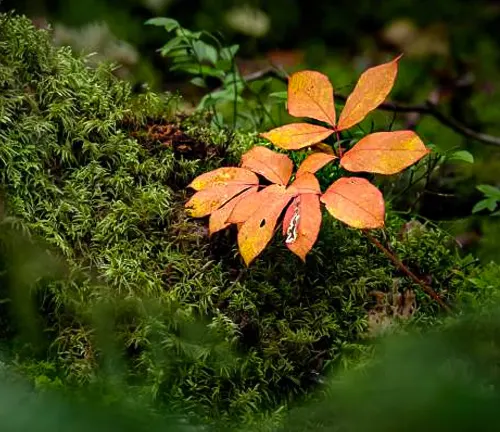
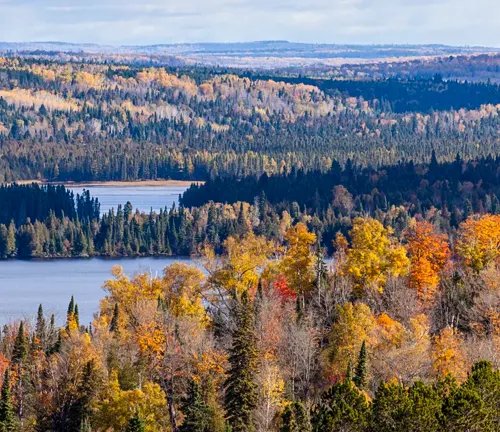
Fauna in Superior National Forest
- Gray Wolf (Canis lupus): The Gray Wolf, a symbol of wilderness, plays a crucial role as a top predator in the forest’s ecosystem. Their presence helps maintain the balance of species populations, particularly herbivores like deer.
- Canada Lynx (Lynx canadensis): This elusive feline, with its distinctive tufted ears and large paws, is adapted for hunting in snowy environments. The Canada Lynx primarily preys on snowshoe hares, making it an important indicator of forest health.
- Moose (Alces alces): The largest member of the deer family, Moose are a common sight in the forest. They play a significant role in shaping vegetation through their grazing habits, influencing the structure and composition of the forest.
- American Black Bear (Ursus americanus): A versatile omnivore, the American Black Bear is integral to the forest’s biodiversity. They contribute to seed dispersal through their diet and play a role in controlling insect populations.
- Bald Eagle (Haliaeetus leucocephalus): As the national bird of the United States, the Bald Eagle is a prominent figure in the forest. Nesting near lakes and rivers, they are top predators in the aquatic food chain and are indicators of water quality.
- Common Loon (Gavia immer): Known for its haunting calls, the Common Loon is a key species in the forest’s aquatic ecosystems. They are top fish predators in lakes and are sensitive to changes in water quality, making them important ecological indicators.
- Snowshoe Hare (Lepus americanus): This small mammal is vital for supporting predators like lynx and owls. Their population cycles influence the dynamics of the forest’s predator-prey relationships.
- North American Beaver (Castor canadensis): Beavers are known as ecosystem engineers. Their dam-building activities create wetlands, which are crucial for biodiversity, water purification, and flood control.
- Red Fox (Vulpes vulpes): A cunning and adaptable predator, the Red Fox plays a role in controlling small rodent populations. Their presence indicates a healthy, balanced ecosystem.
- Pileated Woodpecker (Dryocopus pileatus): One of the largest woodpecker species, their drilling activities are important for forest health, aiding in decomposition and providing habitat for other species, including insects and cavity-nesting birds.
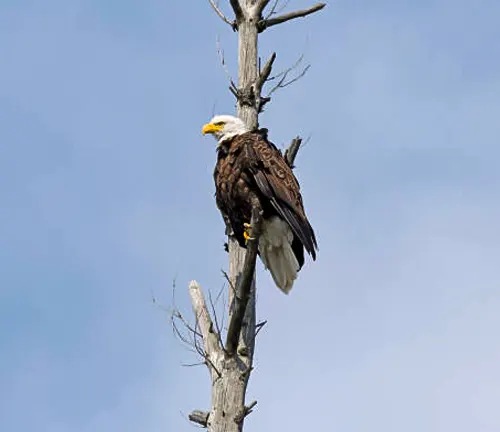
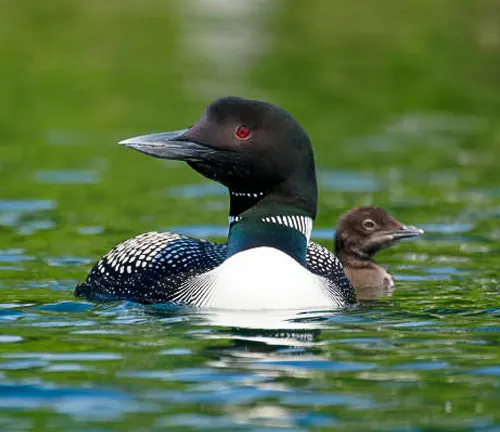
Attractions in Superior National Forest
Boundary Waters Canoe Area Wilderness (BWCAW): This vast wilderness area is renowned for its intricate network of waterways and unspoiled natural beauty. It’s an iconic destination within the forest, offering visitors the chance to immerse themselves in a serene, roadless area filled with lakes, rivers, and forests. The BWCAW is also a place of historical and ecological significance, providing a pristine example of North American boreal forest.
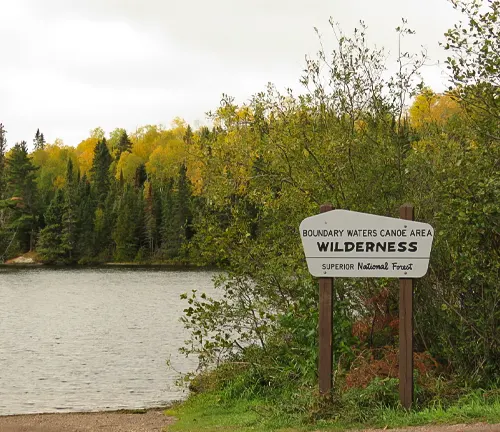

Eagle Mountain: As the highest point in Minnesota, Eagle Mountain is a notable landmark in the forest. The hike to the summit is a popular activity, offering panoramic views of the surrounding wilderness. It’s not just a physical challenge, but also an opportunity to experience the diverse flora and fauna of the region.
Gunflint Trail National Scenic Byway: This scenic route offers a journey through the heart of the boreal forest, showcasing the area’s natural beauty and wildlife. Along the way, visitors can find numerous trailheads, overlooks, and access points to lakes and rivers. The Gunflint Trail is also steeped in history, reflecting the region’s past from indigenous cultures to the logging era.
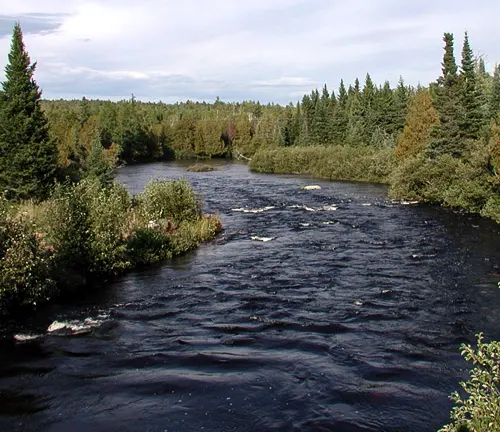

Superior Hiking Trail: Stretching along the ridgeline overlooking Lake Superior, this trail is renowned for its breathtaking views and access to a variety of ecosystems. It provides a unique way to explore the forest’s terrain, from dense woodlands to rocky cliffs, and is a highlight for hiking enthusiasts.
Laurentian Divide: This natural divide is a geological attraction where the waters to the north flow towards the Arctic Ocean, while those to the south head towards the Atlantic. It’s a fascinating destination for those interested in geography and natural science, offering educational insights into the region’s topography.
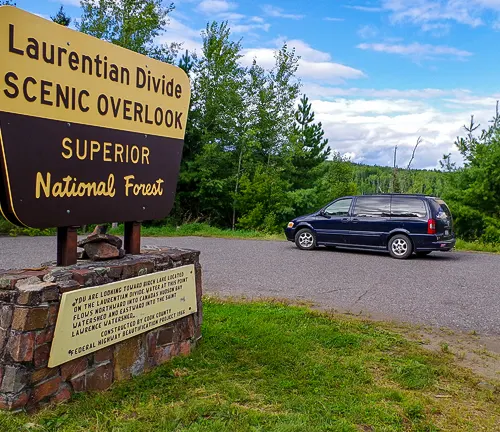
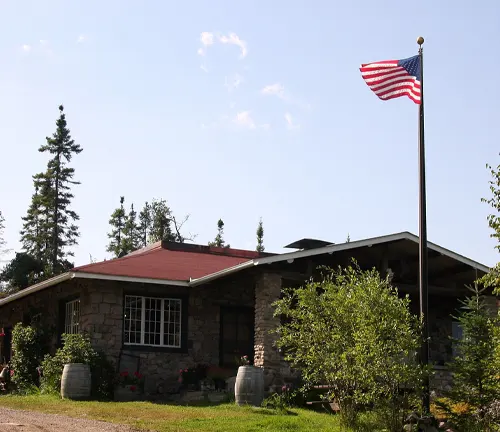
Historic Sites and Interpretive Centers: The forest is dotted with historic sites, including old mining areas, logging camps, and settlements that tell the story of the region’s past. Interpretive centers, such as the Chik-Wauk Museum and Nature Center, provide a deeper understanding of the forest’s history, culture, and ecology.
Recreational Activities in Superior National Forest
- Canoeing and Kayaking: The forest, particularly the BWCAW, is a premier destination for canoeing and kayaking. Its intricate network of lakes and rivers provides a unique opportunity for paddlers to navigate through serene, motor-free waters. This activity not only allows for up-close encounters with the forest’s natural beauty but also offers a peaceful escape in the wilderness. Paddlers can explore remote areas, camp on lakeshores, and experience the tranquility of this vast water network.
- Hiking: With miles of trails, Superior National Forest is a hiker’s paradise. Trails range from short, family-friendly walks to rigorous backcountry hikes. Each trail offers a unique experience, from viewing the scenic vistas atop Eagle Mountain to exploring the lush undergrowth of the boreal forest. Hiking in this region is an excellent way to connect with nature, witness wildlife, and enjoy the clean, fresh air of the northern wilderness.
- Fishing: The forest’s numerous lakes and streams are abundant with a variety of fish species, making it a popular destination for anglers. Whether it’s fly fishing in streams or casting in the lakes, fishing enthusiasts can target species like walleye, northern pike, and smallmouth bass. This activity is not just about the catch; it’s about immersing oneself in the serene environment and enjoying the forest’s aquatic ecosystems.
- Wildlife Watching and Birdwatching: The diverse habitats of Superior National Forest make it an ideal spot for wildlife watching and birdwatching. The forest is home to species such as moose, black bears, gray wolves, and a variety of birds, including the iconic bald eagle. Birdwatchers can especially enjoy the spring and fall migrations, when an array of bird species pass through the area.
- Camping: Offering both backcountry and developed camping options, the forest provides an immersive experience for those wanting to stay amidst nature. Backcountry camping in the BWCAW is particularly popular, allowing campers to experience the wilderness up close. Developed campgrounds provide more amenities, making them suitable for families and those seeking comfort alongside their outdoor adventure.
- Winter Sports: During winter, the forest transforms into a snowy wonderland, ideal for winter sports like cross-country skiing, snowshoeing, and snowmobiling. The well-maintained trails offer breathtaking views of the snow-covered landscape, and the quietness of winter provides a peaceful and invigorating outdoor experience.
- Photography and Nature Observation: For those interested in photography or simply observing nature’s beauty, the forest offers endless opportunities. From capturing the vibrant autumn colors to photographing the majestic wildlife, the forest’s landscapes provide a picturesque backdrop for both amateur and professional photographers.
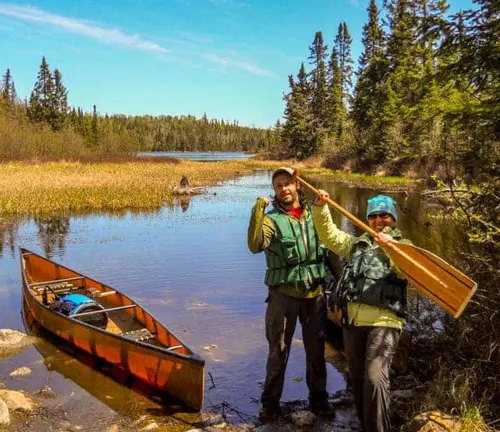

Different Facilities and Amenities in Superior National Forest
- Campgrounds: The forest offers a wide range of camping facilities, from rustic backcountry sites to developed campgrounds with more amenities. These campgrounds typically provide basic necessities such as fire rings, picnic tables, and restroom facilities. Developed sites might also offer hookups for RVs, potable water, and trash disposal services. Camping in these areas provides a comfortable way for visitors to immerse themselves in the natural beauty of the forest.
- Visitor Centers: Visitor centers, located at various points throughout the forest, serve as excellent starting points for visitors. These centers provide valuable information, including maps, trail guides, and exhibits on the forest’s history, ecology, and wildlife. Knowledgeable staff can offer tips, help plan itineraries, and provide updates on current conditions in the forest.
- Hiking Trail Systems: Superior National Forest boasts an extensive network of hiking trails, ranging from easy walks to challenging wilderness treks. These trails are well-maintained and marked, providing safe and accessible ways for visitors to explore the forest’s diverse landscapes. Trailheads often have parking areas and informational kiosks with details about the trail and the area’s ecology.
- Boat Launches and Canoe Access Points: Given the abundance of lakes and rivers, the forest provides numerous boat launches and canoe access points, particularly in the BWCAW. These facilities enable visitors to easily access the water for canoeing, kayaking, and fishing. They are strategically located to provide entry into the forest’s extensive water network.
- Picnic Areas: Scattered throughout the forest are various picnic areas, offering scenic spots for families and groups to enjoy meals outdoors. These areas generally include picnic tables, fire grills, and, in some cases, restroom facilities. They are often located near lakes or scenic overlooks, making them perfect spots for relaxation and enjoying the natural surroundings.
- Wilderness Lodges and Resorts: For those seeking more comfortable accommodations, there are several lodges and resorts located within or near the forest. These facilities range from rustic cabins to full-service resorts, offering amenities like dining, guided tours, and equipment rentals. They provide a balance of comfort and accessibility to the wilderness experience.
- Interpretive Sites and Educational Trails: The forest contains interpretive sites and educational trails designed to enhance visitor understanding of the area’s natural and cultural history. These sites often include informational displays, boardwalks through sensitive areas, and self-guided nature trails with interpretive signage, offering an educational component to the visit.
Tips and Advice for Visiting Superior National Forest
- Check Weather and Seasonal Conditions: The weather in Superior National Forest can be unpredictable, with conditions varying greatly depending on the season. Before your trip, check the local weather forecast and prepare accordingly. Summers can be warm but also bring rain, while winters are cold with heavy snowfall. Proper clothing and gear are essential for comfort and safety, especially if you plan to engage in outdoor activities.
- Obtain Necessary Permits and Be Aware of Regulations: If you’re planning to visit the BWCAW or engage in certain activities like fishing, you may need permits. Ensure you obtain these in advance, as some permits are limited and can sell out quickly. Also, familiarize yourself with the forest’s regulations, such as fire restrictions, wildlife feeding prohibitions, and Leave No Trace principles to help preserve the area’s natural beauty.
- Plan Your Activities and Itinerary: The forest offers a wide range of activities, so it’s important to plan your itinerary based on your interests and the time of year. Whether it’s hiking, canoeing, fishing, or wildlife watching, knowing what you want to do will help you determine where to stay and what to bring. Additionally, consider booking guided tours or renting equipment if you’re trying new activities.
- Prepare for Remote Areas: Much of Superior National Forest is remote, with limited cell phone coverage and amenities. Always inform someone of your travel plans, especially if venturing into backcountry areas. Bring a map, compass, or GPS device, as well as a first aid kit, extra food, water, and emergency supplies.
- Respect Wildlife: The forest is home to a diverse array of wildlife. While sightings can be exciting, it’s important to observe animals from a safe distance and never feed them. This ensures your safety and the well-being of the wildlife. Keeping campsites clean and storing food securely can help prevent unwanted animal encounters.
- Leave No Trace: Practice Leave No Trace principles to minimize your impact on the environment. This includes packing out all trash, staying on designated trails, camping only in designated areas, and avoiding disturbing wildlife or natural features.
- Be Prepared for Bugs: Insect repellent is a must, especially during the warmer months. Mosquitoes, blackflies, and ticks can be prevalent, so wearing long sleeves and pants, using bug spray, and checking for ticks are important measures to stay comfortable and avoid insect-borne diseases.
- Enjoy the Journey: While it’s important to have a plan, be open to spontaneous experiences and enjoy the beauty and tranquility of the forest. Take time to appreciate the scenic views, stop at overlooks, and immerse yourself in the natural wonder of Superior National Forest.
Recommendation
Discover the wonders of Superior National Forest in Minnesota, a haven for outdoor enthusiasts. From serene canoeing to exhilarating hikes, its pristine lakes and lush forests offer a perfect blend of adventure and tranquility. Ideal for both seasoned explorers and those seeking a nature escape, this forest connects you to stunning landscapes and diverse wildlife. Prepare for an unforgettable journey in this breathtaking wilderness.
Conclusion
In summary, Superior National Forest is a remarkable blend of wilderness and adventure. Its enchanting landscapes, from the tranquil Boundary Waters to Eagle Mountain’s peaks, offer visitors a profound connection with nature. This forest isn’t just a destination; it’s an experience, rich in serenity and excitement. For anyone seeking to immerse in nature’s raw beauty, Superior National Forest is an unforgettable retreat, where each visit leaves a lasting imprint of the wild, pristine outdoors.
FAQs
- What makes the Boundary Waters Canoe Area Wilderness in Superior National Forest unique?
The BWCAW is a rare, large-scale, protected wilderness area primarily accessed by canoe. It’s known for its extensive network of lakes and rivers, lack of roads, motor restrictions, and pristine environment, offering a true back-to-nature experience. - Can I see the Northern Lights in Superior National Forest?
Yes, the Northern Lights, or Aurora Borealis, can occasionally be seen in Superior National Forest, especially during the colder months. The forest’s low light pollution and northern latitude make it a favorable spot for viewing this natural phenomenon. - What wildlife might I encounter in Superior National Forest?
The forest is home to a diverse array of wildlife, including moose, gray wolves, black bears, lynx, and bald eagles. While sightings are always a matter of luck and timing, the forest provides a habitat rich enough to support these species. - Are there opportunities for winter sports in the forest?
Absolutely! Winter transforms the forest into a snowy playground, ideal for cross-country skiing, snowshoeing, snowmobiling, and ice fishing. The forest maintains several trails and areas specifically for these winter activities. - What are some must-see trails for first-time visitors?
For first-time visitors, the Eagle Mountain Trail leading to the highest point in Minnesota is a must. The Honeymoon Bluff Trail and the trails along the Gunflint Trail offer breathtaking views and are accessible for most hikers. - How can I ensure I follow Leave No Trace principles in the forest?
To follow Leave No Trace principles, always pack out what you bring in, stay on designated trails, camp only in designated areas, keep wildlife wild by not feeding them, and respect fire regulations and other visitors’ experiences. - What are the best ways to explore the forest’s waterways?
Canoeing and kayaking are the best ways to explore the forest’s waterways, especially in the BWCAW. Renting a canoe or kayak allows for a serene and intimate experience with the forest’s numerous lakes and rivers. - Is Superior National Forest suitable for family trips?
Yes, the forest is great for families. There are numerous campgrounds with amenities, shorter hiking trails, picnic areas, and educational visitor centers that make it accessible and enjoyable for visitors of all ages.
As we wrap up our journey through Superior National Forest, remember that this stunning natural haven is waiting for you to explore its wonders. Whether it’s paddling peacefully in the BWCAW, trekking through vibrant trails, or simply basking in the tranquility of unspoiled nature, the forest beckons with endless adventures. So, gear up, set your sights on this magnificent wilderness, and prepare to create unforgettable memories amidst the beauty of Superior National Forest. Your next great outdoor adventure is just a visit away!


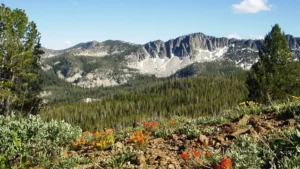
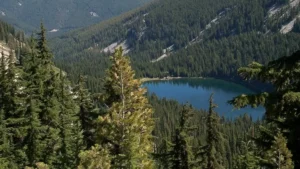


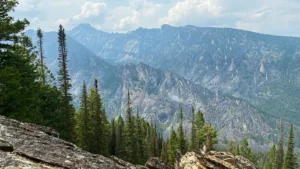
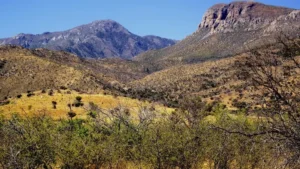

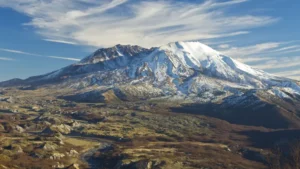

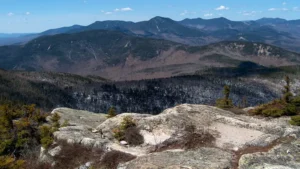
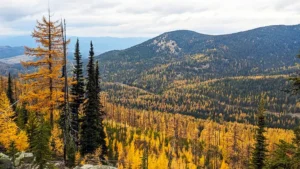
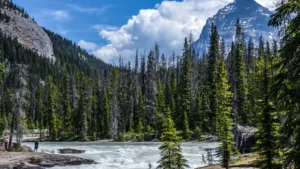
Leave your comment